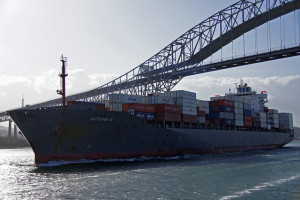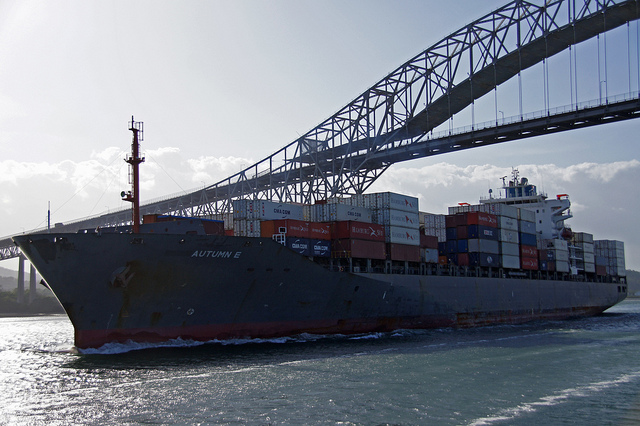 The container shipping industry may have seen freight rates eroded by as much as 9% in 2015, and this year is not expected to provide relief from this downward trend, according to a new forecast by Drewry.
The container shipping industry may have seen freight rates eroded by as much as 9% in 2015, and this year is not expected to provide relief from this downward trend, according to a new forecast by Drewry.
The global shipping consultancy in a new report estimates freight rates eroded by “as great as 9%” last year, while predicting that carrier unit revenues will “decline further in 2016, albeit at a slightly slower pace.”
In its latest “Container Forecaster” report, it foresees not just faster freight rate reductions but also “industry-wide losses in 2016” as a result of the further widening of the supply-demand imbalance and insufficient measures to reduce ship capacity.
“Excluding 2009, the past 12 months has seen the lowest spot rates in most major trade lanes and all at the same time. This is not solely due to fundamental supply/demand imbalances caused by weak volumes and over supply,” it continued.
On the Asia-U.S. West Coast and U.S. East Coast, end-of-year 2015 rates were around US$815 and $1,520 per 40-foot container, respectively, to post the lowest in six years. “The rate deterioration emphasises that carriers have been fighting for market share and are positioning themselves further for the potential shifting of cargo from the West to the East Coast after the Panama Canal widening,” said Drewry.
In the Asia-North Europe trade, spot rates of below $200 per 40-foot container during June 2015 were also unprecedented. While spot rates have staged a recovery since the start of 2016, Drewry believes these gains will prove short-lived.
It pointed to “a new and worrying trend” that ocean carriers seemed “no longer able to cut costs faster than the prevailing declines seen in the freight rate market.”
Moreover, Drewry expects industry losses to “widen to over $5bn in 2016” amid deepening overcapacity as well as the fact that many lines no longer quote a bunker adjustment factor on some trade lanes due to falling fuel prices.
Drewry also indicated that corrective action taken by the industry so far has been insufficient and that more needs to be done “to bring about any kind of stability.”
The removal of six major east-west services and the blanking of 32 voyages in November and 21 in December did relatively little to improve trade route supply-demand balances. The rate hike initiatives implemented in late 2015 did not work for carriers on many trade lanes and in some cases were suspended or postponed because of feeble conditions.
Proposed or forthcoming industry consolidations may reduce the number of big market players and improve individual company efficiency, but this will not reduce industry vessel capacity in any way, said the report.
Noting that “big vessels no longer guarantee decent profitability,” Drewry suggests for lines to remove more vessels and restructure more trade lanes with new operational agreements to bring up the idle fleet numbers. In late 2015, the idle fleet was only about one million TEUs, or just under 5% of the global fleet.
The report predicts further that should Asia-North Europe contract rates be signed at an “optimistic” average of $900 per FEU for 2016, “this equates to an estimated $1.4 billion loss for the carriers on one trade lane.”
Neil Dekker, Drewry’s director of container research, said: “Comparisons are being made to 2009 when approximately 1.3 million teu was removed from a considerably smaller fleet. The mass scale lay ups were triggered by the fact that lines ran out of cash. The industry is not there yet as some lines are still making a profit and the very low fuel prices are propping them up. But a further two or three quarters of declining financial profitability may trigger a notable rise in the idle fleet as we enter the second half of 2016.”
Photo: Patrick Denker





